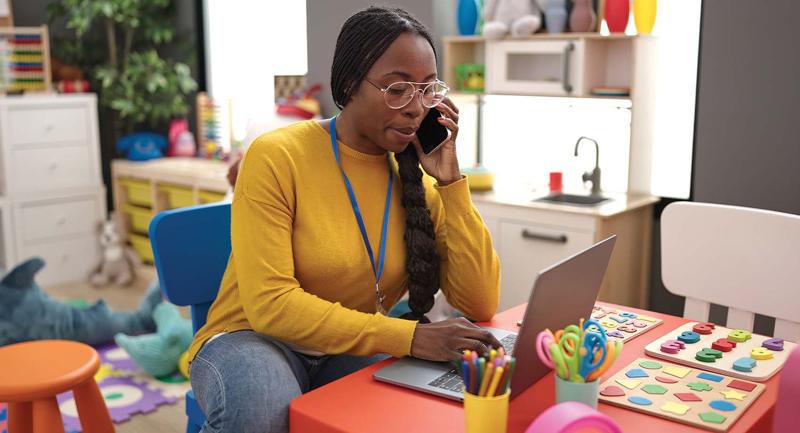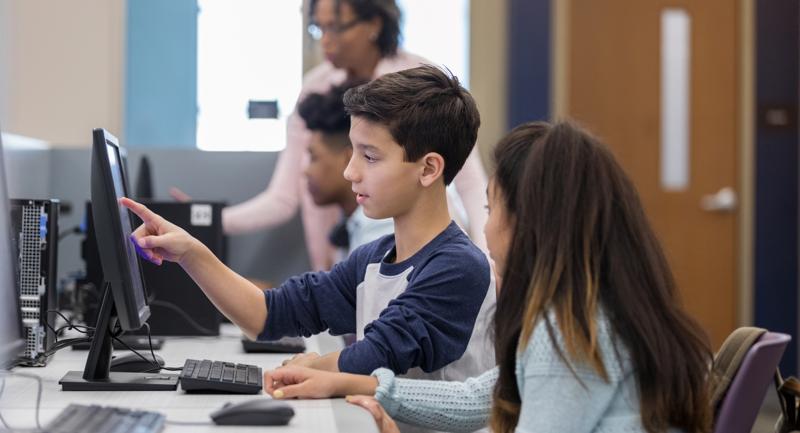I once had a memorable conversation with a veteran science teacher whose school had recently switched to a "flipped classroom" model. She and her colleagues were expected to put together video-based lessons that students could complete on their own time on their school-provided tablets, which in turn would free up class time for small-group projects and one-on-one instruction.
The teacher was never exactly sure why the school had decided to make this sudden pedagogical shift, except that grant funding for the tablets seemed to be involved. Meanwhile, the staff received only about a half a week's worth of training on the new model, delivered by an outside consultant. And once the program was underway, numerous logistical problems emerged. The technology frequently malfunctioned. Many students had a hard time getting through the lessons without support and feedback. Teachers had trouble managing their time and were working longer hours. Frustrations mounted.
The teacher I spoke to, who was no luddite, lamented that she could think of plenty of better ways to spend money on classroom technology.
I suspect this tale of ed-tech dysfunction sounds familiar to many educators. While arguably extreme, it is illustrative of the kinds of problems schools have had in adapting to the digital revolution. Indeed, it includes all the hallmarks of school technology initiatives gone wrong—poor communication, questionable financial motivations, impulsive execution, inadequate training, faulty equipment, and failure to account for the human dimensions of teaching and learning.
On the bright side, since many schools have gone through initiatives like this, we may now be at a point—a kind of ed-tech 2.0, so to speak—where education leaders can take a more thoughtful, far-sighted approach to tech integration. As teacher Kyle Redford writes, "Experience has made us savvier, and, at times, more skeptical." That message is echoed throughout this issue on "The Tech-Savvy School." Many of our contributors discuss ways to harness the power of technology in schools through more deliberate and nuanced planning. Thus, for example, Liz Kolb presents a framework for evaluating the use of particular digital strategies in the context of a lesson. Catlin Tucker outlines a three-pronged professional learning infrastructure to support schoolwide tech-initiatives like blended learning. And Richard Culatta highlights the importance of creating a coherent vision and common language around tech projects. Other contributors go even further, emphasizing the cultural and institutional changes that may be required for schools to deliver on the true promise of technology to transform learning. In his article on fostering student agency, for instance, Will Richardson writes of the need to take time to reimagine classrooms and the role of teachers, and to engage in "important conversations about assessment. …" Similarly, Simon Rodberg recounts how a school where he was principal only began to see significant changes from its investment in technology when it experimented with fundamental changes to class formats and curriculum structures (with teacher buy-in). In his piece on digital equity, meanwhile, researcher Justin Reich argues that to go beyond disjointed, superficial tech integration, schools must develop a "broader view of what's possible for all students." Within this context of smarter stewardship, this issue also provides plenty of examples of how educators are leveraging tech advancements to deepen and expand students learning in ways that would have been hard to imagine even a few years ago. Shannon Putman and Lateefah Id-Deen and Jaime Donally write about the use of augmented and virtual reality platforms to provide immersive lesson components. Redford explains how assistive technology apps have helped her develop students' skills and "increase access to high-level curricula." And in a photo feature, we look at a charter school in Washington, D.C., whose innovative curriculum aims to help its students become "tech creators, not just consumers." We hope these stories help you bring innovation and creativity to your school, without the possible turmoil of earlier tech efforts.
Guiding Questions for Select Articles in this Issue
› Do you agree with Richardson that "true agency is the freedom to choose what to learn as well as how to learn it"? Why or why not?
› Why is technology so crucial to student agency? Why aren't more schools embracing the potential of the two?
› Think of a time you've used technology in the classroom to enhance student learning. Could you have done something differently to give students more control over what and how they learned?
› Are you currently integrating tools or apps into your classroom or school? Has reading about the Triple E Framework inspired you to do anything different?
› How do you minimize student distraction when using technology?
› Which of the Triple E Framework components do you think is most important? Why?
› How do you factor in equity, beyond access, as you plan for technology integration in your school or classroom?
› Can you think of a time that you used technology to simply extend existing practices in your classroom? How could you have approached that lesson or activity more meaningfully?
› Have you and your colleagues considered conducting an audit of digitally rich learning opportunities in your school or district? What do you think such an analysis would find in terms of possible digital divides among students?
› Reflect on the rollout of a recent schoolwide technology initiative you led or were part of. What went well? What didn't?
› Could Tucker's professional learning infrastructure—generating a spark, elevating coaching, and supporting sustainability with PLCs—be adapted to a current or future technology initiative in your school?
› What additional supports should leadership provide for successful technology implementation in teachers' classrooms?
› Why is it so difficult to make big changes in schools and education?
› Have your school's experiments with technology been lackluster? If yes, why do you think that is?
› Can you think of any small ways to chip at convention and use technology in more effective and meaningful ways?









